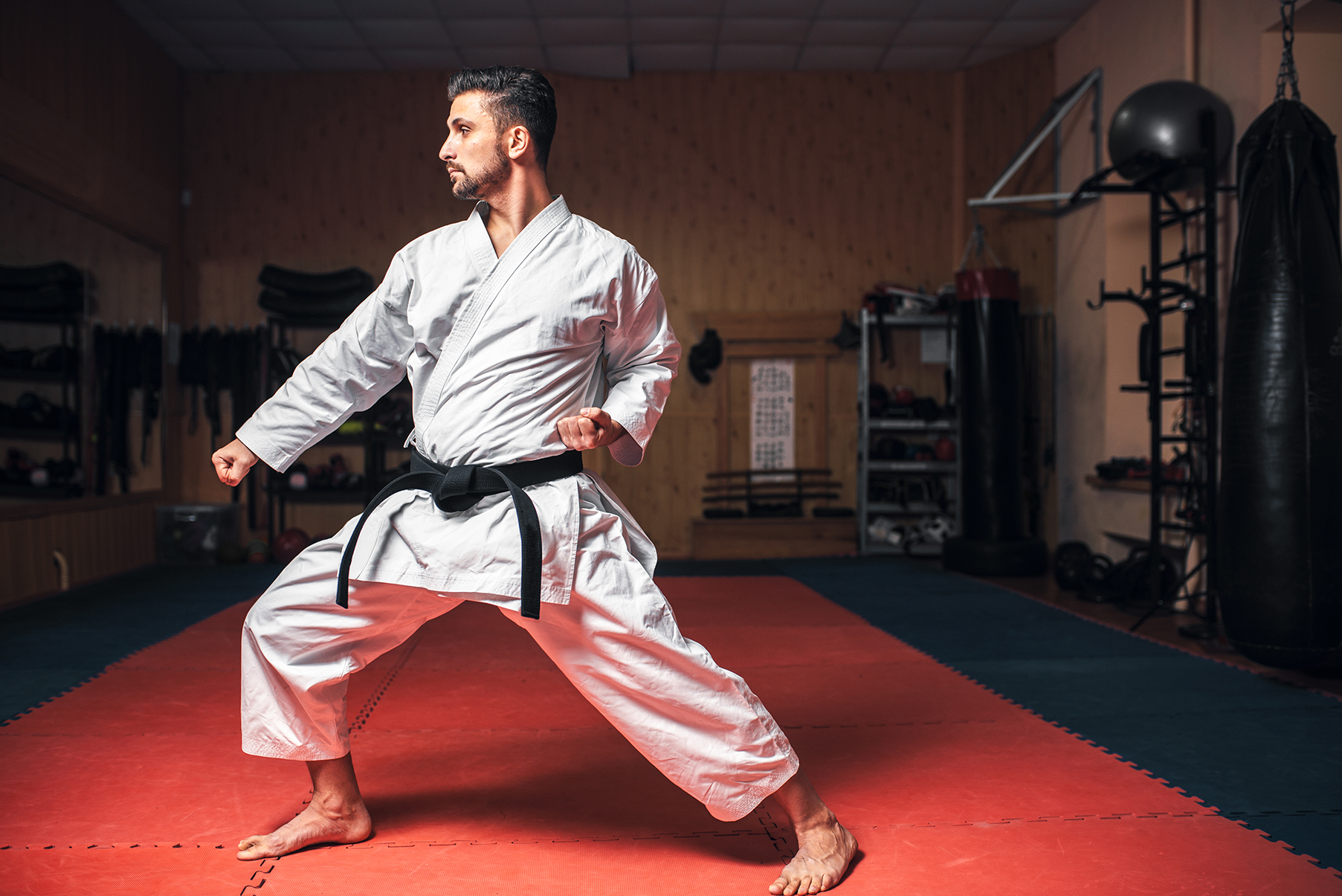I want to propose a question to everyone who is receiving this bulletin. I would like you to send me an email on what you think is the correct position your feet, knees, and shoulders should be in the Zen-Kutsu-Dachi/Forward stance. Example: Back foot pointed straight in the direction you’re going or at an angle 15dg/ 45dg, etc. your knees and shoulder position and why.
I have seen little explanation on how this technique should be done correctly. After receiving info on this, I will give my take on this technique; The Zen-Kutsu-Dachi is one of the key techniques developing power, speed, and balance when used correctly.
REALITY:
To begin training in the martial arts is to commit to a gradual process of remaking yourself, body, and soul. Many start training in the Martial arts with few ever getting past five years. The reason for such a high dropout rate is many. Without dedication, hard work, and a mindset to overcome your inadequacies both physically and mentally, you will never be what you want to be. This can be true in all facets of our life.
Not every martial art is practical and efficient at the same things. If you’re going to depict a style, find its strengths, learn what context developed it, and how it adapted to fit that context.
This leaves the question. What style is the best? No one style suits all. Your physical capabilities will play a big part in what style best suits you. Every martial art has its strong points and week points.
As Kaicho of NKJU/NKJUI I intend on having a wide range of styles as part of my curriculum. By sharing techniques and training methods of other legitimate martial arts styles, we can become better martial artists.
Being a veteran and having worked in law enforcement for many years, I have had my share of encounters from both armed and unarmed attackers. For this reason, I have always taught weapons defense, and I am continually training in advanced disarming techniques against a variety of weapons that are prevalent in this day and time.
By using AGK American Goshin Budo principals in conjunction with Arnis/Escrima techniques. I feel it will broaden NKJU’s® foundation dealing with specialized training in Jiu-Jitsu and Kobudo martial arts. As Kaicho of NKJU/NKJUI I have introduced separate Menjo’s for Jiu-jitsu & Kobudo ranking.
Jiu-jitsu/ Kobudo
Go to my Website or Facebook If you’re a member and see my article relating to this topic.”
The threats most people may encounter involve a handgun or knife. Techniques involving guns and blades can be difficult to learn if you’re not properly trained. You may train for years in most Asian martial arts classes without ever leaning what to do.
NKJU brings to the table practical training in self-defense, with techniques that we practice for kata, which are expressly combative in design. Despite this, katas are primarily useless in an actual fighting situation. “Kata is like swimming on dry land but is necessary.” You may then ask, why practice kata?
The regular practice of kata helps to develop proper body mechanics, muscle memory, explosive power, speed, and the execution of breathing. Kata practice is to equip a student with principles for self-defense, and understanding the bunkai of kata will allow you the ability to use some of the techniques in kata for practical applications.
THE DELIMA:
Traditional martial arts have been hijacked to create a new kind of martial art designed for competition. When this happens, a person submits to rules, and this takes away warlike violence of the martial arts.
The popularity of competition has been over-commercialized, and students think this is part of what is expected of them when they join a martial arts school. This is far from being true.
I have no problem with this as a whole since I have had my fair share of competition in sparring, kata, and Kobudo with trophies to show for it.
I believe Sports Karate has its place in the martial arts. These schools develop some very accomplished students whose acrobatic prowess should be applauded. However, they lack the necessary understanding and knowledge of what traditional martial art is.
Showmanship/Sports karate should not be judged along beside traditional martial arts. This should be apparent since showmanship is a person’s skill at performing or presenting things in an entertainingly and dramatic way.
NKJU® intends on supporting both traditional martial arts as well as sports karate. I feel both can be used to promote the growth of martial arts. However, I incest on instructors to distinguish the underlying differences between traditional MA, and sports karate to their students.
I make it clear to my students how you do in competition should not be a reflection of how well you can do in real life or death situations. Any instructor who thinks differently is just being naive.
I want to go back to a remark I made earlier, and that was. What style is the best? We all want to think our form is the best, and that is just being nieve. The best type is that style whose techniques work at a higher percentage of time and under any given situation.
This is what NKJU intends to promote. To take the best of all that there is and combine it as part of our martial art program.
“Versatility is an outstanding trait when in twined with common sense.” Kaicho Davis
NKJU ® National Karate Jiu-Jitsu Union and National Karate jiu-jitsu Union Int. 2691 Worth County Line Road Albany, Georgia 31705 davisroyiv3@gmail.com
May 2020 NKJU® Bulletin
NKJU ® & NKJUI® is a USPTO registered trademark owned by Roy D. Davis III. Any use of this name by any person, organization, company, or in association with the marketing or sale of any products and services without the owner’s permission violates the US Trade Mark Act.
All NKJU® & NKJUI® Bulletins are under Copyright and shall not be altered from its original form without the written

